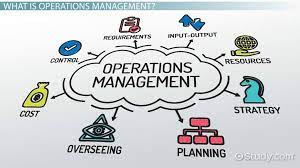Simple Decision Making Techniques: Making Choices with Confidence
Making decisions is a part of our everyday lives. From small choices like what to wear or what to have for breakfast, to more significant decisions like choosing a career path or buying a house, our lives are filled with countless choices. While some decisions may come naturally to us, others can leave us feeling uncertain and overwhelmed. That’s where simple decision-making techniques can come in handy.
Pros and Cons Analysis:
One of the most straightforward techniques is the pros and cons analysis. Start by listing all the advantages (pros) and disadvantages (cons) of each option you’re considering. This technique helps you visualize the potential benefits and drawbacks of each choice, making it easier to weigh your options objectively.
The 10-10-10 Rule:
The 10-10-10 rule encourages you to consider the potential consequences of your decision in three different time frames: how you will feel about it in 10 minutes, 10 months, and 10 years from now. This technique helps you gain perspective on the long-term implications of your choices, enabling you to make decisions that align with your values and goals.
The Gut Feeling Approach:
Sometimes, relying on your intuition can be an effective decision-making technique. Trusting your gut feeling involves paying attention to your instincts and inner voice when making choices. This technique can be particularly useful when faced with time-sensitive decisions or situations where rational analysis may not provide a clear answer.
The Five Whys Method:
The Five Whys method is a problem-solving technique that can also be applied to decision making. Start by asking yourself why you’re considering a particular option or why a certain choice appeals to you. Then, continue asking “why” five times in succession, digging deeper into the underlying reasons behind your inclination. By doing so, you can uncover hidden motivations or potential biases that may influence your decision.
The Decision Matrix:
When faced with multiple options, the decision matrix technique can help you evaluate and compare them systematically. Create a table with different criteria that are important to you, assign weights to each criterion based on its importance, and rate each option against these criteria. This method allows you to objectively assess the strengths and weaknesses of each choice, facilitating a more informed decision.
Remember, no technique guarantees a perfect decision every time. However, these simple decision-making techniques can provide structure and clarity when navigating choices. It’s essential to consider the unique circumstances of each decision and adapt these techniques accordingly.
Ultimately, making decisions is about finding a balance between rational analysis and trusting your instincts. By employing these simple techniques, you can approach decision making with confidence, knowing that you have considered various factors and perspectives. So embrace the power of decision making and trust yourself to make choices that align with your values and aspirations.
Frequently Asked Questions: Simple Decision-Making Techniques Explained
- What are the three decision-making techniques?
- What are the basic techniques of decision-making?
- What are the five decision-making techniques?
- What are 4 decision-making techniques?
What are the three decision-making techniques?
There are countless decision-making techniques available, but three commonly used ones are:
Pros and Cons Analysis: This technique involves listing the advantages (pros) and disadvantages (cons) of each option you’re considering. By visually comparing the positive and negative aspects of each choice, you can weigh them against one another and make a more informed decision.
The 10-10-10 Rule: This technique prompts you to consider the consequences of your decision in three different time frames: how you will feel about it in 10 minutes, 10 months, and 10 years from now. By evaluating the potential short-term and long-term impacts, you can gain perspective on the overall desirability of each option.
3. The Gut Feeling Approach: Sometimes, relying on your intuition or gut feeling can be a valuable decision-making technique. This involves paying attention to your instincts and inner voice when making choices. While it may not always provide a logical explanation, trusting your gut can guide you towards decisions that align with your instincts and values.
What are the basic techniques of decision-making?
There are several basic techniques of decision-making that can help guide you through the process. Here are a few commonly used techniques:
- Pros and Cons Analysis: This technique involves listing the advantages (pros) and disadvantages (cons) of each option you’re considering. It helps you evaluate the positive and negative aspects of each choice, allowing for a more balanced assessment.
- Cost-Benefit Analysis: This technique involves weighing the costs and benefits associated with each option. By comparing the potential gains against the potential losses, you can determine which option offers the most favorable outcome.
- Decision Matrix: The decision matrix technique involves creating a table with different criteria that are important to your decision. Assign weights to each criterion based on their relative importance, and rate each option against these criteria. This structured approach helps you objectively compare and evaluate different choices.
- Six Thinking Hats: Developed by Edward de Bono, this technique encourages looking at a decision from multiple perspectives represented by different “hats.” Each hat represents a different thinking style (e.g., logical, emotional, creative), enabling you to explore various angles and consider different viewpoints before making a decision.
- Pareto Principle (80/20 Rule): The Pareto Principle suggests that 80% of outcomes result from 20% of efforts or causes. Applying this principle to decision-making involves identifying the crucial factors or options that will have the most significant impact on achieving your desired outcome.
- SWOT Analysis: SWOT stands for Strengths, Weaknesses, Opportunities, and Threats. This technique involves assessing these four elements related to your decision or options. By identifying strengths and weaknesses internally and opportunities and threats externally, you can gain insights into the potential risks and advantages associated with each choice.
- Intuition: Sometimes relying on your intuition or gut feeling can be an effective technique when faced with complex decisions or situations where rational analysis may not provide a clear answer. Trusting your instincts can help guide you towards the choice that feels right to you.
Remember, the effectiveness of these techniques may vary depending on the context and complexity of the decision. It’s essential to adapt and combine these techniques as needed, considering factors such as time constraints, available information, and personal preferences.
What are the five decision-making techniques?
There are numerous decision-making techniques available, but here are five commonly used techniques:
- Pros and Cons Analysis: This technique involves listing the advantages (pros) and disadvantages (cons) of each option you’re considering. By visually comparing the positive and negative aspects, you can make a more informed decision.
- The 10-10-10 Rule: This technique prompts you to consider the potential consequences of your decision in three different time frames: how you will feel about it in 10 minutes, 10 months, and 10 years from now. It helps provide perspective on the long-term implications of your choices.
- Gut Feeling Approach: Relying on your intuition or gut feeling can be an effective technique for making decisions. It involves paying attention to your instincts and inner voice when faced with choices, especially in situations where rational analysis may not provide a clear answer.
- The Five Whys Method: Originally a problem-solving technique, the Five Whys method can also be applied to decision making. By repeatedly asking “why” about a particular option or choice, you dig deeper into the underlying reasons behind your inclination, uncovering hidden motivations or biases that may influence your decision.
- Decision Matrix: This technique is useful when comparing multiple options systematically. Create a table with different criteria important to you, assign weights to each criterion based on their importance, and rate each option against these criteria. The decision matrix helps objectively assess the strengths and weaknesses of each choice.
Remember that these techniques serve as tools to aid decision making but may not guarantee a perfect outcome every time. It’s important to adapt them according to the specific circumstances and complexity of each decision you face.
What are 4 decision-making techniques?
There are numerous decision-making techniques available, but here are four commonly used ones:
- Pros and Cons Analysis: This technique involves listing the advantages (pros) and disadvantages (cons) of each option you’re considering. By visually comparing the positive and negative aspects of each choice, you can make a more informed decision.
- Decision Matrix: The decision matrix technique helps you evaluate and compare multiple options systematically. Create a table with different criteria that are important to you, assign weights to each criterion based on its importance, and rate each option against these criteria. This method allows for a more objective assessment of each choice.
- The 10-10-10 Rule: This rule encourages you to consider the consequences of your decision in three different time frames: how you will feel about it in 10 minutes, 10 months, and 10 years from now. By examining the potential short-term and long-term implications, you can gain perspective on the overall impact of your choice.
- Six Thinking Hats: Developed by Edward de Bono, this technique involves looking at a decision from six different perspectives or “hats”: white (facts and information), red (emotions and intuition), black (caution and critical thinking), yellow (optimism and benefits), green (creativity and new ideas), and blue (overview and process control). By wearing each “hat” one at a time, you can consider various angles to make a well-rounded decision.
Remember that these techniques serve as tools to assist your decision-making process. Depending on the situation, some techniques may be more suitable than others. It’s important to adapt them according to your specific needs and circumstances.




